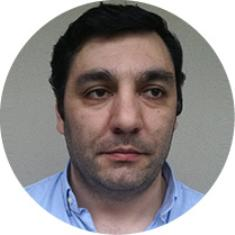The Use of Ultrasonic Technology in the Treatment of Light Alloys
A special issue of Metals (ISSN 2075-4701). This special issue belongs to the section "Additive Manufacturing".
Deadline for manuscript submissions: closed (31 December 2020) | Viewed by 14962
Special Issue Editor
Interests: Al and Mg alloys; melt degassing; alloy refinement; ultrasonic processing; FEA optimization of ultrasonic system; advanced casting manufacture; aluminium foam; micro and nano-reinforced lightweight alloys
Special Issues, Collections and Topics in MDPI journals
Special Issue Information
Dear Colleagues,
The currently available processing technologies are limiting and, hence, there is an ongoing search for new components with higher performance and lower production costs. Thus, new affordable processing techniques to process novel materials/alloys, that are both environmentally friendly and extremely effective, are a must to remove this bottleneck. During recent years, we have been confronted with new developments in the casting and manufacturing light alloys, namely, due to the demand for new degassing and refinement techniques of liquid alloys. Acoustic energy is a valuable alternative to the current melt treatment techniques used to increase the mechanical properties and soundness of Al- and Mg-based components. During the application of high intensity ultrasonic waves to liquid metal, the alternate pressures may produce cavitation under certain conditions. Nevertheless, in order to produce cavitation, it is necessary to verify a wide range of conditions which depend not only on the ultrasonic parameters and the form in which they are transmitted to the medium but, also, of the physical characteristics and the level of impurities present in the melt. In addition to high degassing efficiency caused by the development of cavitation, the cavitation phenomenon also directly influences the solidification mechanisms.For this Special Issue, we wish to encouraged the submission of publications covering significant research developments by either ultrasonic melt processing of light alloys or the integration of ultrasonic equipment in the casting processes. It is expected that through such activities, any gaps that might exist between the conventional processing of light alloys and the ultrasonic melt processing technique will be effectively reduced or eliminated.
Dr. Hélder Puga
Guest Editor
Manuscript Submission Information
Manuscripts should be submitted online at www.mdpi.com by registering and logging in to this website. Once you are registered, click here to go to the submission form. Manuscripts can be submitted until the deadline. All submissions that pass pre-check are peer-reviewed. Accepted papers will be published continuously in the journal (as soon as accepted) and will be listed together on the special issue website. Research articles, review articles as well as short communications are invited. For planned papers, a title and short abstract (about 100 words) can be sent to the Editorial Office for announcement on this website.
Submitted manuscripts should not have been published previously, nor be under consideration for publication elsewhere (except conference proceedings papers). All manuscripts are thoroughly refereed through a single-blind peer-review process. A guide for authors and other relevant information for submission of manuscripts is available on the Instructions for Authors page. Metals is an international peer-reviewed open access monthly journal published by MDPI.
Please visit the Instructions for Authors page before submitting a manuscript. The Article Processing Charge (APC) for publication in this open access journal is 2600 CHF (Swiss Francs). Submitted papers should be well formatted and use good English. Authors may use MDPI's English editing service prior to publication or during author revisions.
Keywords
- ultrasonic melt processing
- light alloys
- design and optimization
- Al grain size
- intermetallic phases
- mechanical properties
- acoustic cavitation
- non-linear acoustics
Benefits of Publishing in a Special Issue
- Ease of navigation: Grouping papers by topic helps scholars navigate broad scope journals more efficiently.
- Greater discoverability: Special Issues support the reach and impact of scientific research. Articles in Special Issues are more discoverable and cited more frequently.
- Expansion of research network: Special Issues facilitate connections among authors, fostering scientific collaborations.
- External promotion: Articles in Special Issues are often promoted through the journal's social media, increasing their visibility.
- Reprint: MDPI Books provides the opportunity to republish successful Special Issues in book format, both online and in print.
Further information on MDPI's Special Issue policies can be found here.





